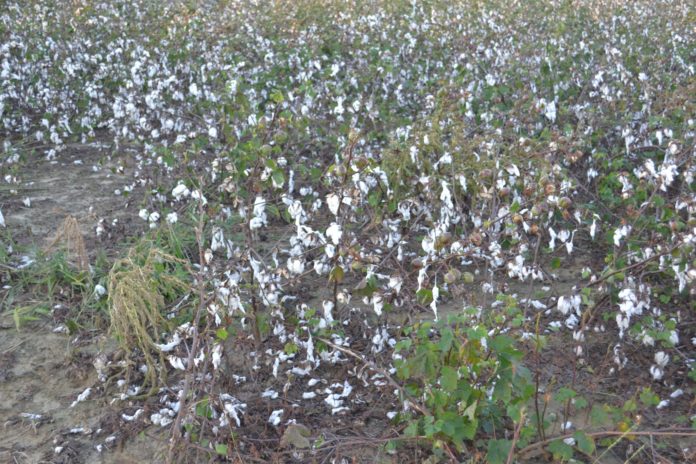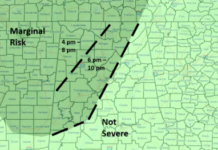AUBURN, Ala. – Farmers and producers in 25 Alabama counties affected by natural disasters in 2018 and 2019 can apply for assistance through the U.S. Department of Agriculture’s Wildfire and Hurricane Indemnity Program Plus (WHIP+).
“Alabama agriculture has taken some body blows over the last two years from extreme weather,” said Jessica Kelton, an Alabama Extension farm management agent. “Not only did farmers lose crops last year that were ready for harvest, but spring flooding this year prevented planting for many farmers.”
More than $3 billion in disaster relief became available to farmers with enrollment starting Sept. 11. The relief package includes new programs to cover losses of eligible farm stored commodities due to disaster events in 2018 and 2019. Also, prevented planting supplemental disaster payments will provide support to producers who were prevented from planting eligible crops for the 2019 crop year.
“Both insured and uninsured producers are eligible to apply for WHIP+,” Kelton said.
Eligible Alabama Counties
- Barbour: 2018 only
- Blount: 2019 only
- Calhoun: 2018 only
- Cherokee: 2019 only
- Clarke: 2018 only
- Colbert: 2019 only
- Cullman: 2018 only
- Dale: 2018 only
- DeKalb: 2019 only
- Etowah: 2018 only
- Franklin: 2019 only
- Geneva: 2018 only
- Greene: 2019 only
- Henry: 2018 only
- Houston: 2018 only
- Jackson: 2019 only
- Lamar: 2019 only
- Madison: 2019 only
- Marion: 2019 only
- Mobile: 2018 only
- Morgan: 2019 only
- Pike: 2018 only
- Clair: 2018 only
- Washington: 2018 only
- Winston: 2019 only
Kelton said producers in counties that did not receive a disaster declaration can still apply for WHIP+ but must provide documentation to establish that the crops were directly affected by a qualifying disaster loss.
Because grazing and livestock losses, other than milk losses, are covered by other USDA disaster recovery programs, those losses are not eligible for WHIP+.
General eligibility and payment limitations
Eligible crops include those for which federal crop insurance or Noninsured Crop Disaster Assistance Program coverage is available, excluding grazing crops. Covered crops can be found at USDA’s Risk Management Agency (RMA) Actuarial Information Browser at webapp.rma.usda.gov/apps/actuarialinformationbrowser.
Eligibility will be determined for each producer based on the size of the loss and the level of insurance coverage elected by the producer. A WHIP+ factor will be determined for each crop based on a producer’s coverage level. Producers who elected higher coverage levels will receive a higher WHIP+ factor.
“Producers must provide verifiable and reliable production records as part of the application process,” Kelton said.
If a producer is unable to provide production records, she said WHIP+ payments will be determined based on the lower of either the actual loss certified by the producer and determined acceptable by FSA or the county expected yield and county disaster yield.
WHIP+ benefits are limited to a payment of either $125,000 or $250,000 per crop year, depending upon their verified average adjusted gross income. For information regarding payment limitations, contact the local USDA service center or visit farmers.gov/recover.
Future insurance coverage requirements
“All producers receiving WHIP+ payments will be required to purchase crop insurance or NAP at the 60 percent coverage level or higher for the next two available, consecutive crop years after the crop year for which WHIP+ payments were paid,” she said. “Producers who don’t purchase crop insurance for those years will be required to repay the WHIP+ payment.
Learn more
Learn more about recovery from disasters through the USDA by visiting the USDA website for recovery at www.farmers.gov/recover.





















